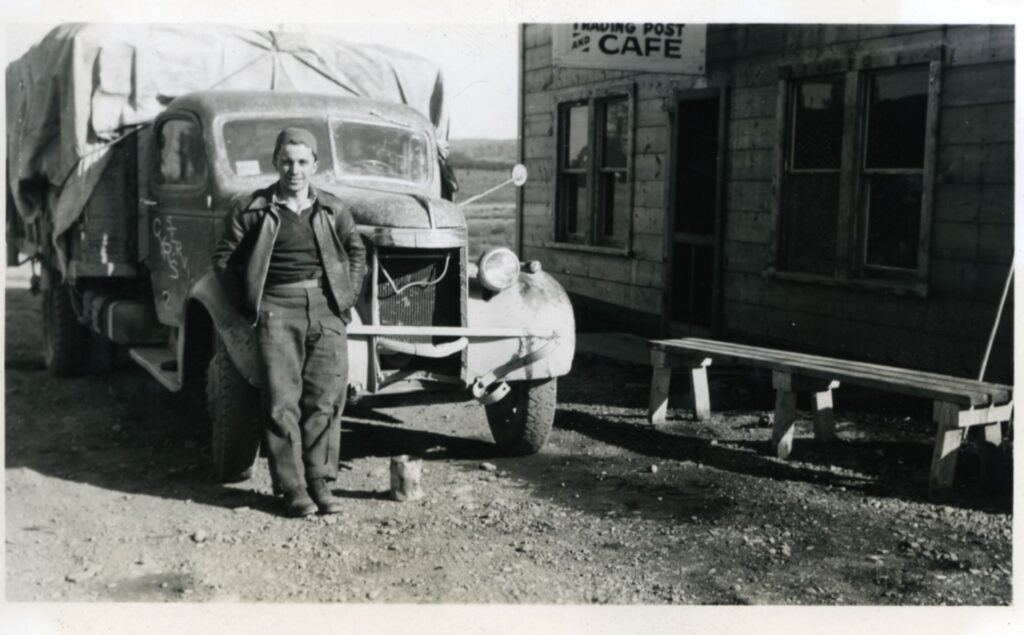Understanding the 'Gravel Magnet'
When visitors enter the museum, they walk directly into a beautiful quilting exhibit created by the Kluane Quilters Guild (note: this exhibit is on currently on load to the Guild, and will return to YTM in Autumn 2024).
These quilts represent scenes from different twists and turns along the Alaska Highway, as envisioned by different members of the Guild. Although they all followed strict style guidelines to ensure that the road continued to flow from one quilt to the next, each member created their own distinct artwork using different techniques, materials, textures and colors.
The Alaska Highway continues to capture the imaginations of travelers even after more than eighty years. What do you remember about your first trip up the highway?
For an example of the thought process behind these artworks, read the artist statement below from Vanessa Austin, the quilter behind Alaska Highway – A Memoir:
“Alaska Highway-A Memoir is based on the images blazed into my mind by this roadway. Golden fall leaves, flaming red fireweed lining the ditches and forest edges, and wildlife lingering in the trees. The distant peaks with caps of snow reflect the cloudless icy blue sky while nearby hills and mountains are resplendent in their deep hues of low bush fall foliage. Iconic blue bridges allow safe passage over rushing glacial streams and rivers, and abandoned road houses whisper long histories of travelers.“
As we explored the Alaska Highway community during its 80th anniversary year of 2022, we also found ourselves drawn to the idea of the roadhouse as a meeting place for travelers up and down the road, from the farthest stretches of the Yukon east of Watson Lake, to the northernmost border just past Beaver Creek.
Roadhouses were a critical piece of highway infrastructure, particularly in the early days when driving 500 kilometers on a rough gravel road simply was not possible. They provided places of respite, rest and refreshment between far-flung communities, and ensured that travelers had a place to fill their tanks, grab a bite to eat and rest their heads between days spent fighting the road.
After the highway was paved in the 1960s and carmakers began improving fuel economy on modern vehicles, roadhouses slowly began to fade from the corners that they had occupied for decades. We’ve collected and displayed postcards and patches from nearly 20 roadhouses that used to dot the highway — only one of those businesses exists to this day.
Is this a tragedy? A natural evolution of our roads from places of community to places of convenience? We invite visitors to stop and reflect on the impact that seemingly positive changes can have on our social ties. We also invite folks to look to the future: it takes significantly longer to charge an electric vehicle than it does to fill up a gas tank. Might we see the reemergence of roadhouse-style restaurants and lodging with the electrification of the highway? For now, we’ll just have to wait and see.















